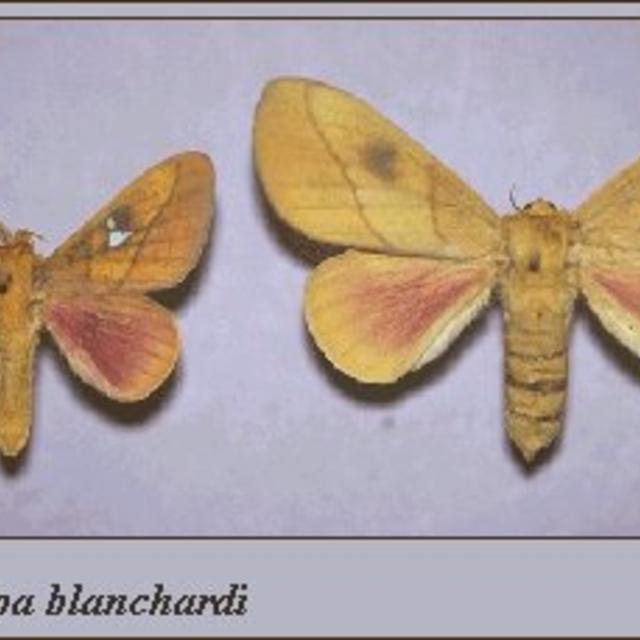Subfamily: Ceratocampinae
Identification: Upperside of forewing is brown to light yellow, with the outer half darker and ranging from brown to purple. Upperside of hindwing is orange to yellow with a red patch near the base.
Wing Span: 2 1/8 - 3 1/8 inches (5.4 - 7.8 cm).
Life History: Adults emerge at night and mate after 10 PM. Females lay eggs the following 3 evenings. Young caterpillars perch on the undersides of petioles and feed on the leaf bases. Older caterpillars cut through petioles partway and bend down the leaves in order to feed on them. Caterpillars pupate and overwinter in burrows in the ground.
Flight: Several flights from March-November.
Caterpillar Hosts: Texas ebony (Pithecellobium flexicaule) and probably others including Wright's acacia (Acacia wrightii), blackbrush acacia (A. rigidula), guajillo (A. berlandieri), and soft-leaf mimosa (Mimosa malacophylla).
Adult Food: Adults do not feed.
Habitat: Thorn forest and ebony woodland.
Range: The lower Rio Grande Valley of South Texas and south into Mexico.
Conservation: Spread of agriculture and housing has resulted in less than 1% of the original habitat remaining. Most of the untouched thorn forest is protected in state or national refuges.
NCGR: GU - Unable to assign rank due to lack of available information.
Management Needs: None reported.




